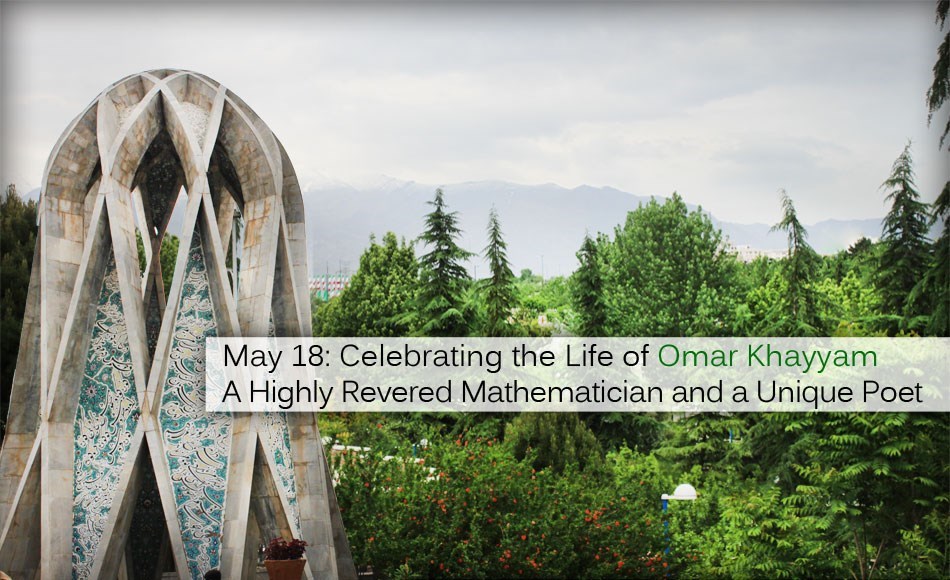
Born on May 18, 1048 in Nishapur in modern-day province of Khorasan Razavi, Iran, Khayyam showed a flare for different sciences at an early age. He traveled to many cities of high academic potential such as Balkh (present-day Afghanistan) Samarkand and Bukhara in Uzbekistan, as well as numerous cities in Iran. He also went to Mecca and Medina on pilgrimage. His years of traveling to other areas and visiting a great number of contemporary scholars provided Khayyam with an amount knowledge and experience few people possessed at the time. Before long, he had become an established scholar in domestic and foreign academic circles and communities.
Khayyam’s mostly known in Iran for his contributions to mathematics, having written several books, treatises and articles on numerous subjects and devising or reviewing various mathematical, algebraic and geometric theories and methods. Two of his famous books, Treatise on Demonstration of Problems in Algebra (1070) and Explanations of the Difficulties of Euclid’s Definitions (1077), which consists of different volumes, have made a major influence in mathematics and algebra since their date of publication. In these works, as well as other publications, Khayyam proposes methods and solutions for solving different mathematical and algebraic problems.
Omar Khayyam is equally prominent in literature, especially Persian poetry. It is believed that he has written a thousand quatrains. It is through these quatrains and, of course, the effort of Edward FitzGerald (1809-1883) that the western world has come to know Khayyam. In Rubaiyat of Omar Khayyam, FitzGerald provides a poetic translation of Khayyam’s work of poetry. Rubaiyat (رباعیات) is the plural of Rubaiy (رباعی), meaning a quatrain.
As a philosopher, there is much debate about Khayyam’s tendencies and mindset. Throughout history, people have introduced Khayyam’s thought pattern at many extreme ends. This may be due to the fact that most of what is known from his beliefs and thoughts have been derived from his poems which may have undergone subjective interpretations. It is believed that he was influenced by Avicenna and taught the physician’s The Book of Healing in his own hometown of Nishapur. We can claim, carefully and with some doubt, that Khayyam’s philosophy and belief system had a scientific orientation.
Similar to contemporary mathematicians, Khayyam was also a well-known astronomer. He participated in the construction of an observatory which was supported by the royalty of his time. More importantly, Khayyam, together with other scientists, partook in the reform on the Iranian calendar of the time which resulted in the creation of the Jalali calendar. This calendar, one of the oldest in the world, remained in use up to the 20th century and is certainly the most accurate solar calendar surviving up to this day. The calendar used in Iran and Afghanistan is based upon the Jalali calendar. Honoring Khayyam’s deeds in the field of astronomy, a lunar crater was named after him in 1970, followed by the minor planet 3095 Omrkhayyam, which was discovered by Soviet astronomer Lyudmila Zhuravlyova in 1980.
Khayyam’s life was filled with extraordinary scientific and academic endeavors, turning him into a highly revered scholar throughout history. Similar to many other Iranian scholars, he spent his life in the service of humankind. The great mathematician passed away on December 4th, 1131 and was laid to rest in his hometown of Nishapur. His tomb today is visited by a great number of tourists and academicians from around Iran and the world.
Sources:
en.wikipedia.org
www.britannica.com
Arya Rahimi Golkhandan
Photo by Alireza Jafari